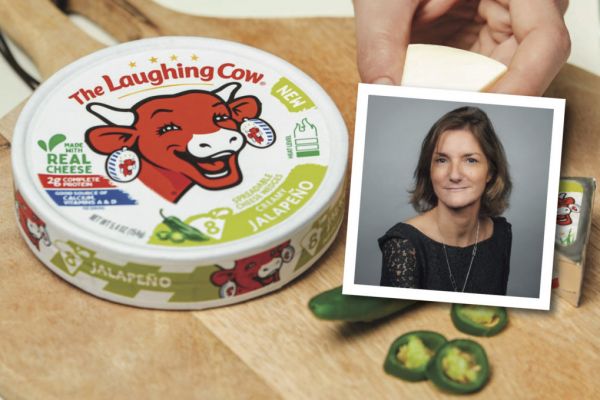The bakery and pastry product sector is facing cost increases at present, but increased innovation is helping firms to steer through the challenges. This article first appeared in ESM July/August 2022.
From an ingredient point of view, one of the main takeaways from Russia’s invasion of Ukraine has been the effect on the global grain market, as well as certain edible oils. Both the FAO’s Cereal Price Index and Vegetable Oil Price Index hit all-time highs in March, meaning that prices in these segments are at their most elevated levels in more than 30 years.
While prices have dropped marginally since, this inflationary situation is playing a role in the bakery category, which is having to navigate a number of simultaneous challenges. As well as increased grain and oil prices, the sector is still in recovery mode, following a COVID-19 crisis that saw the HoReCa sector – a key channel for bakers – all but put on hold for two years.
According to Didier Jans, secretary general of the AIBI, the International Association of Plant Bakeries, which represents more than 1,500 bakers, the sector is facing an “unprecedented situation” at the moment, with the war in Ukraine compounding what were already far-from-optimal circumstances.
“The [Ukrainian] context is particularly worrying and damaging because of an uninterrupted succession of crises over the last two years,” Jans says. “The resilience of many industries, including bakery, is being put under heavy stress.
“Since the COVID pandemic, there have been direct flow disruptions on some primary resources. One of the aspects this highlighted was the tight interdependence of supply chains – what happens in one chain might have [a] critical impact on other, completely separate ones in a way that is often very difficult to predict.”
The bakery industry has long proven itself to be adaptable in the face of adversity, and navigating the current geopolitical situation is no different. In France, for example – coupled with a shortage of grain and sunflower oil as a result of the Ukrainian situation – bakers recently had to contend with a lack of eggs due to a bird flu outbreak in Vendée.
As Paul Boivin, director general of the FEB (La Fédération des Entreprises de Boulangerie/Pâtisserie), recently told local media, “Fortunately, our members are resilient. Manufacturers are working to replace eggs with vegetable solutions and are testing substitutes for sunflower oil, such as soybean or rapeseed oil. R&D is central to producing with new ingredients, while guaranteeing the taste and nutritional qualities.”
According to Jans at the AIBI, the current situation with regard to ingredients is “highly volatile”. Between 2020 and 2022, the price of flour, vegetable oil, and butter increased by almost 100%.
“The interlinked nature of, and cascade effect between, chains implies that – even when a producer has a relatively limited exposure to a particular ingredient, such as sunflower oil – the contingency move to alternative ingredients, such as rapeseed oil, [which] results in huge increases on these supplies,” Jans explains. “This is, of course, far from limited to the main raw materials, since all supplies and services are on a steep increase.”
As a result, contract negotiation is becoming more of an ongoing process, he adds, saying, “We are seeing a high degree of contract instability. Normally, supply and delivery contracts are negotiated on an annual basis, but the current explosion of prices and volatility has resulted in almost continuous negotiation cycles.”
Read More: Soaring Bread Prices Spark Protests And Shop Fires In Iran: IRNA
Dealing With The Pressure
The longer that the Ukrainian crisis goes on, however, the likelihood is that these pressures will be more difficult to manage.
“Business is cyclical, but when the cycle remains at the bottom for too long, damage can occur,” says Jans. “Sadly, one can hardly anticipate the war to be settled quickly, and even if it is, amplification phenomena would likely prevent a quick return to normal.”
In France, for example, inflation recently hit a new record high of 5.8% in May, putting pressure on bakery firms that are already “struggling to recruit,” according to FEB’s Boivin. Solutions may need to be found to “reduce energy consumption” or “avoid the use of this or that ingredient,” he added.
Raw-material price increases are likely to put considerable pressure on margins at bakery firms, with many forced to produce “as innovatively, as efficiently, and as cost-consciously as possible,” according to a prominent Dutch baker.
As the AIBI’s Jans notes, “An internal enquiry in our Dutch member association revealed that, in the first quarter of 2021, approximately 22% of bakeries were not making any profit, and the figure has raised to 61% in Q1 2022. This can clearly not be afforded for a long period.”
Read More: Bakery Firm Aryzta Sets Out Midterm Targets
Energy Concerns
Concerns over the lasting impact of the Ukrainian conflict have also been flagged in Germany, which has recently been in the spotlight over its wavering commitment to Russian gas. Were the tap to be suddenly turned off – which is entirely possible – the food production sector – in particular, bakery – would bear the brunt.
“Without an unrestricted supply of energy to the large bakeries […] maintaining the supply of bread as a staple food in Germany is simply not guaranteed,” noted Armin Juncker, general manager of the country’s Verband Deutscher Großbäckereien (Association of German Large Bakeries). Switching to other energy sources is “out of the question,” said Juncker – at least in the short-to-medium term.
As the AIBI’s Jans puts it, the availability of gas and electricity – as well as the price of both – are “pivotal” to bakery production.
“No one can ignore the fact that making bread is largely a matter of cooking dough in an oven, which obviously requires energy,” he says. “For years, many bakers have been engaged in optimising their equipment with energy parsimony objectives, but the current energy price increases, by order of magnitude, are just out of scale.”
Thinking Responsibly
Aside from the day-to-day challenges, the bakery industry has committed to a more sustainable future and its role in transforming the food supply chain. The AIBI recently signed the EU Code of Conduct on Responsible Food Business and Marketing Practices, formalising the efforts being made by its members in recent years.
‘The transformation towards a sustainable food system is on its way, and bakery products have an important role to play,’ the group noted, adding that its commitment to the code is an ‘important milestone’.
“Despite the difficult situation, our sector has been, and continues to be, committed to a sustainability path,” says Jans. “When the European Commission called for the development of a code that would become a pillar of its Sustainable Food Strategy, it just felt natural to actively support its development, and then to endorse it.”
According to the AIBI, many of its members have already embraced the sustainability agenda, although the pace of progress depends on the market in question. Plus, the current crisis will inevitably impact sustainability efforts. According to Jans, for many bakers, consideration of “any investment or innovation that is not directly related to survival is relatively limited” at present.
Tackling Food Waste
One notable aspect of the EU Code of Conduct relates to food loss and waste, which has been a long-standing concern in the bakery sector for several years. After all, a loaf of bread can be produced for just a few cents and sold for well in excess of that – the high margin gained means that dealing with waste has heretofore not been that significant an issue. That is changing, however, with consumers demanding that businesses do more to tackle waste in their production and supply chains.
“At production level, the issue is now under control, and food waste isn’t an issue any more,” says the AIBI’s Jans, “with co-product being largely streamed to the animal feed sector, where it represents a valuable and appreciated nutrient source.
“The picture at end-consumer level is more complex and less directly accessible to us. There is food waste at this level and likely room for improvement, but this touches on both economic and sociological aspects that might require longer-term initiatives.”
Retailers have a role to play, and many are reconfiguring production schedules, selling products at ‘end of day’ at a reduced rate, and working with charities or food banks – a move that the AIBI “wholeheartedly welcomes,” according to Jans.
Others are turning to creative ways to repurpose waste bread, with unsold loaves being used as a substrate for mushroom-growing (such as at urban farming group ECLO, which recently announced a partnership with Colruyt Group), as well as for beer production. Finnish retailer Kesko, Aldi Portugal, Tesco and SPAR Austria are some of the retailers to have developed ‘bread beer’, created from leftover in-store bakery items.
That trend has also come full circle, with Belgian bakery Copains Group recently announcing a partnership with the Brussels Beer Project (BBP) and Delitraiteur, a gourmet delicatessen chain, which will see it produce bread from the grain residue of beer production. The ‘circular bread’, as it has been described, is prepared with beet juice and turmeric, to offer a point of difference in the category.
Product Reformulation
One trend that is likely to gain traction in bakery over the coming years – spurred on by the pandemic – is the growing interest in health and wellness. Sourdough and the use of ‘ancient grains’ has been around for many years now, but as consumers gain greater understanding of the role that bread can play in a healthy diet, they are likely to seek out new ingredient profiles.
In Finland, for example, oat breads are gaining in popularity, with Leipätiedotus ry, the Finnish bakery association, reporting that this sub-segment is helping to lift the overall category – bread sales were up 2.8% last year, compared to 2020.
“The growth in the popularity of light breads is due to the fibrous and healthy breads that are rich in wholegrain oats,” commented Terhi Virtanen, project coordinator, Leipätiotoitus ry. “[This] can be found in the increased supply of oat breads on the market, the undeniable health effects of oats, and the suitability of oats for many diets.”
Rye breads, too, are gaining in popularity, despite seeing their share of the market decline last year, Virtanen added.
The Salt Debate
A more prevalent issue – and one that is gaining traction in many European markets – is the level of salt in bread.
Spain is among the countries taking an active approach in addressing this issue. In April of this year, the country’s government formally adopted regulations first approved in 2019, which established a maximum content of salt allowed in bread products – 1.31 grams per 100 grams of bread if measured by chloride determination, or 1.66 grams per 100 grams of bread if measured by total sodium content.
The so-called ‘bread quality standard’ brings the country into line with the WHO’s guidelines of a salt intake of less than five grams (around two grams of sodium) per person per day.
As representative group ASEMAC (which has been an active participant in the AESAN Collaboration Plan for the Improvement of the Composition of Food and Beverages and Other Measures 2017-2020) noted recently, ‘Salt plays a very important role when making bread. On the one hand, it acts as a flavour enhancer, since it highlights aromas and flavours, and on the other, as a technical aid. The reduction of salt in bread leads to a less elastic dough, with a smaller volume, without toughness or consistency and with less colour.’
At the same time, the industry has been proactive in accommodating this measure. As Felipe Ruano, president of ASEMAC, tells ESM, “Since the approval of the standard in 2019, the companies represented in ASEMAC have analysed the most appropriate measurement method, determining that it should be carried out based on the total sodium content, since the basic criteria coincides with what is established in the community regulations of consumer information – Regulation 1169/2011 – thus avoiding confusion.
“Our position is to adapt to what the current regulations dictate, based on the fact that salt continues to be an essential ingredient in bread-making.”
On an international level, the AIBI has also acknowledged that salt reduction needs to be part of the long-term evolution of the sector and in customers’ relationship with the category.
“We are fully engaged on this path, with several of our national associations having already subscribed to voluntary progressive reduction of salt content,” Jans explains. “Several countries have already taken considerable steps. In the Netherlands, salt in bread has been reduced by more than 25% over the last ten years, and authorities are putting forward the bakery industry as a good example on how the food industry can concretely contribute to better health.
“Such a smooth transition seems to be one that is most likely able to meet both health contingencies and consumers’ expectations.”
Through investment in high-growth categories, increased specialisation and embracing the needs of consumers, the bakery category can navigate the current challenges. After all – as it was evident during the pandemic – consumers remain committed to everyday staples, particularly their daily bread.
© 2022 European Supermarket Magazine – your source for the latest Fresh Produce news. Article by Stephen Wynne-Jones. Click subscribe to sign up to ESM: European Supermarket Magazine.














